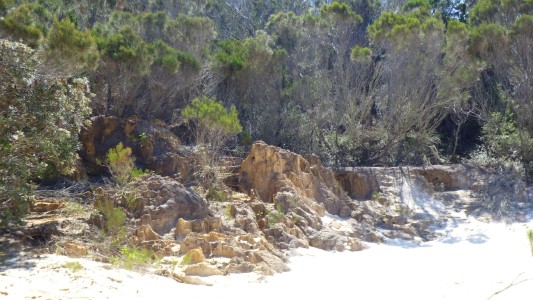
I feel like I'm steadily shaking off my illness. Steadily able to reduce the medication.
Muscles that ache from exercise are so much better than muscles that are painful from disease.
So I set off to the Kirrar Sandblow.
The track entrance is a bit more than 1km north of us.
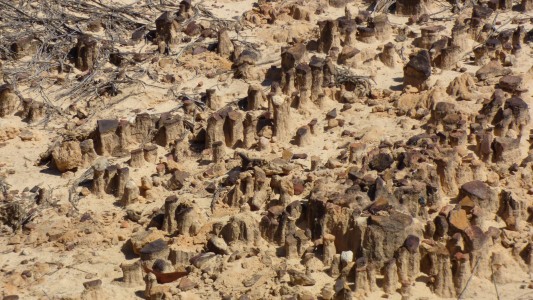
These formations are less than 50mm across.
Small sandstone chips with sand eroded around them.
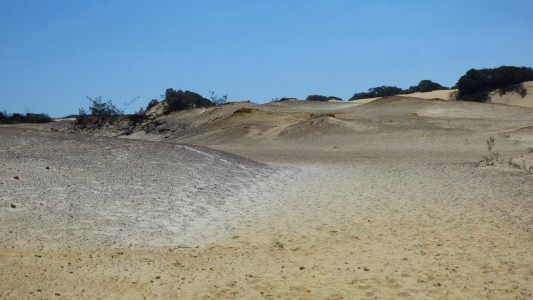
The Fraser Island sand blows are typical of some coastal dunes..
The dunes we saw at Mungo and parts of Morrocco are U-shaped, with the wind blowing from the bottom (crescents).
These dunes are U-shaped with the wind blowing from the top (parabolic).
Both formed by the wind from predominantly one direction. But the sides of parabolic dunes are anchored by vegetation.
The area in the foreground has been uncovered leaving very soft sandstone which is almost still hard sand.
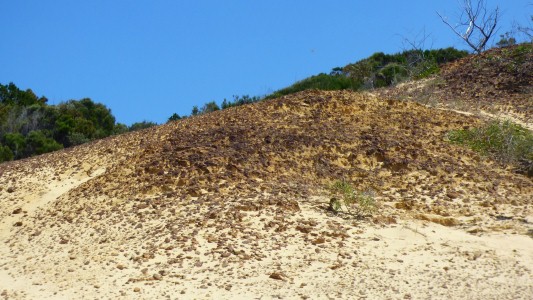
Rock that has been formed from sand and the weight of it above.
Purples from, presumably manganese, reds from iron, and yellows.
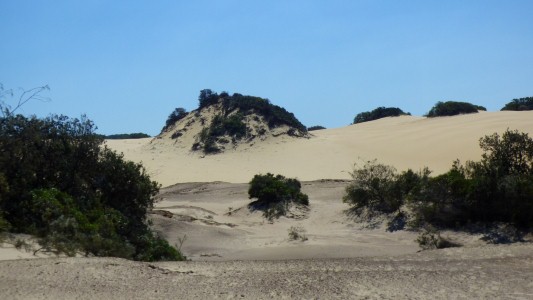
There are deposits of ilmenite and rutile on Fraser Island which were mined from 1949 to 1965.
Rutile is predominantly titanium dioxide. Normally dark / black. However, titanium dioxide is also the brilliant white pigment used in paints and other applications.

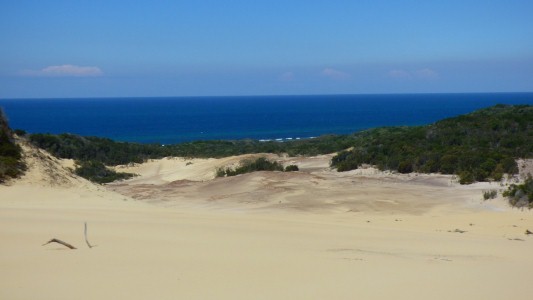
I was a bit ambivalent about my footsteps in the pristine dune.
There were a few older footprints off to one side. And they disappear fairly quickly.
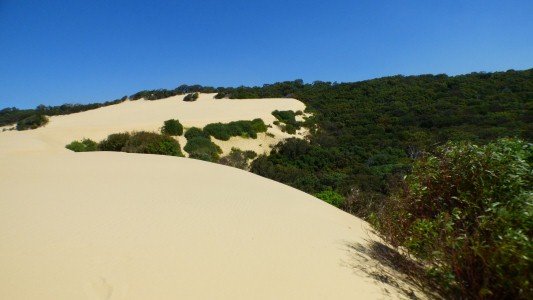
Strangely rounded.
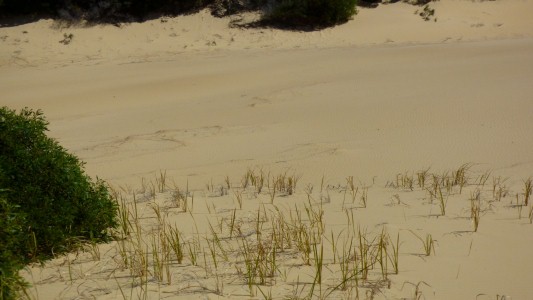
Partly why its a parabolic dune methinks.

Just that the sand is flowing uphill.
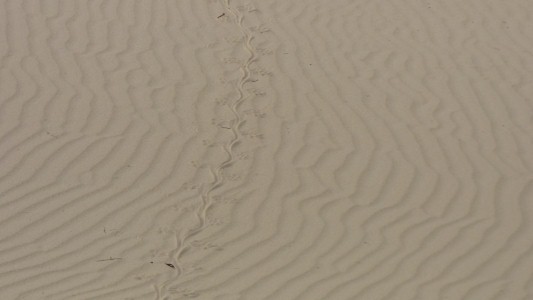
I think this is a big enough track to be that of a goanna.
I walked back along the beach to find Ali paddling in the health giving salt water.
Lunch time, and a siesta.
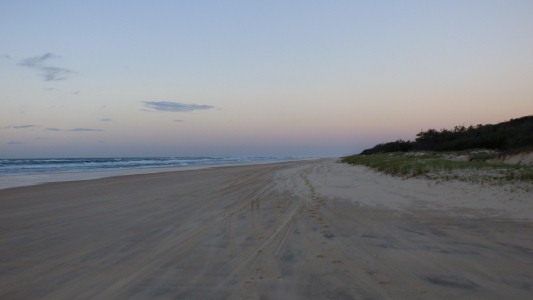
Things can look different in the early morning or evening.
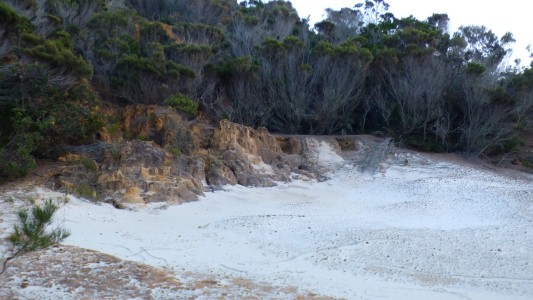
There's a bit more contrast between the brilliant white of the sand and the "almost sandstone".
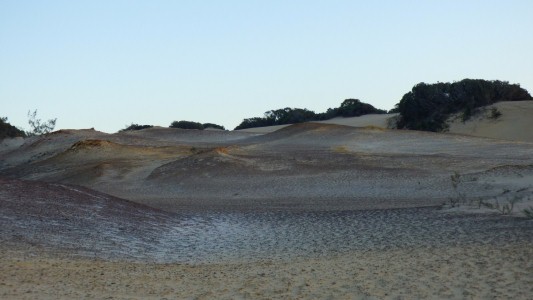
The white sand intrigued us a bit.
We assumed it was the freshest sand.
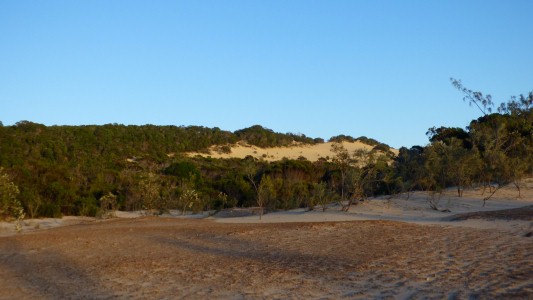
Its really quite cold with a stiff breeze.
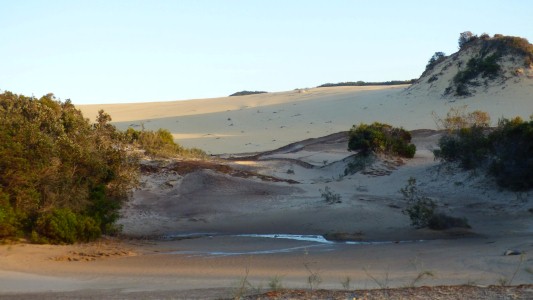
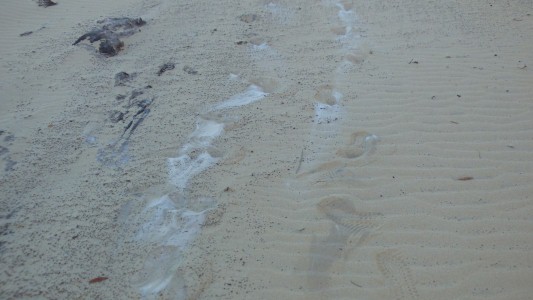
Its under the sandier coloured sand, disturbed by our footsteps.
As we read a bit more it seems what we initially thought of as only sands from the granites of NSW have been washed northwards we realise that there is a wide mixture of different mineral sands.
The common source of titanium dioxide is rutile or ilmenite. But there is also anatase, which is white. Just not as common.
We have really only scratched the surface (so to speak).
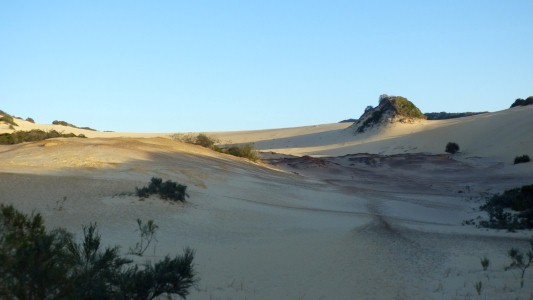
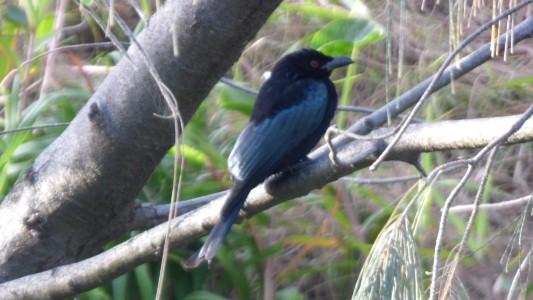
We are struggling with the latest edition of bird book. It doesn't look very much like its picture.
Had to look on internet to check.
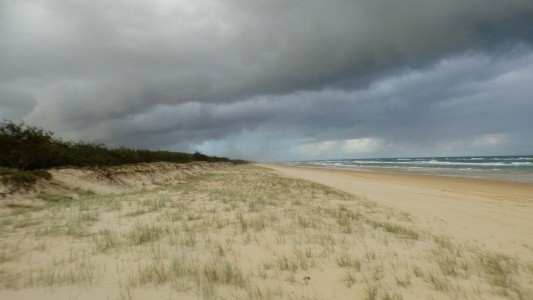
A quick look outside to check.
A bit of rain in the distance, but nothing much showing on the radar.
Which suited the intrepid duo, though we didn't really need an excuse to doss and rest our sore feet and muscles.
A day to catch up on thinking time.
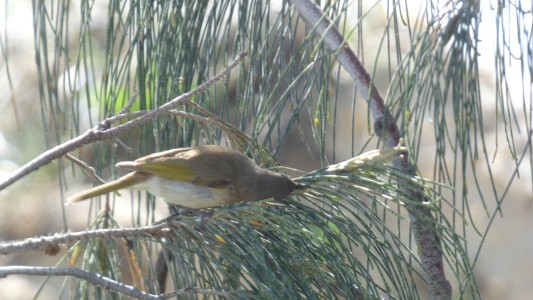
This time without the early morning effort. Its also back to cloudless blue skies and gentle breeze.
Longer than usual for the birds to get used to our presence. We think a honey eater in the casuarina.
Monday the tide will be another hour later and we'll depart the island.
About 60 km to drive along the beach to the ferry.
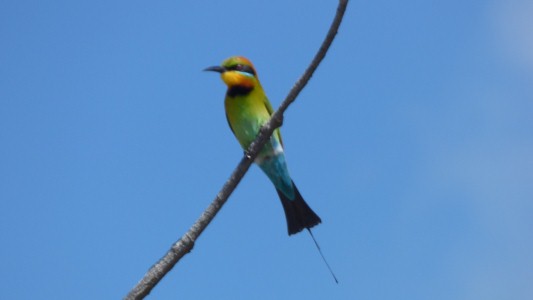
From only one visiting a few days ago there's now about four. Not quite as shy as they were.